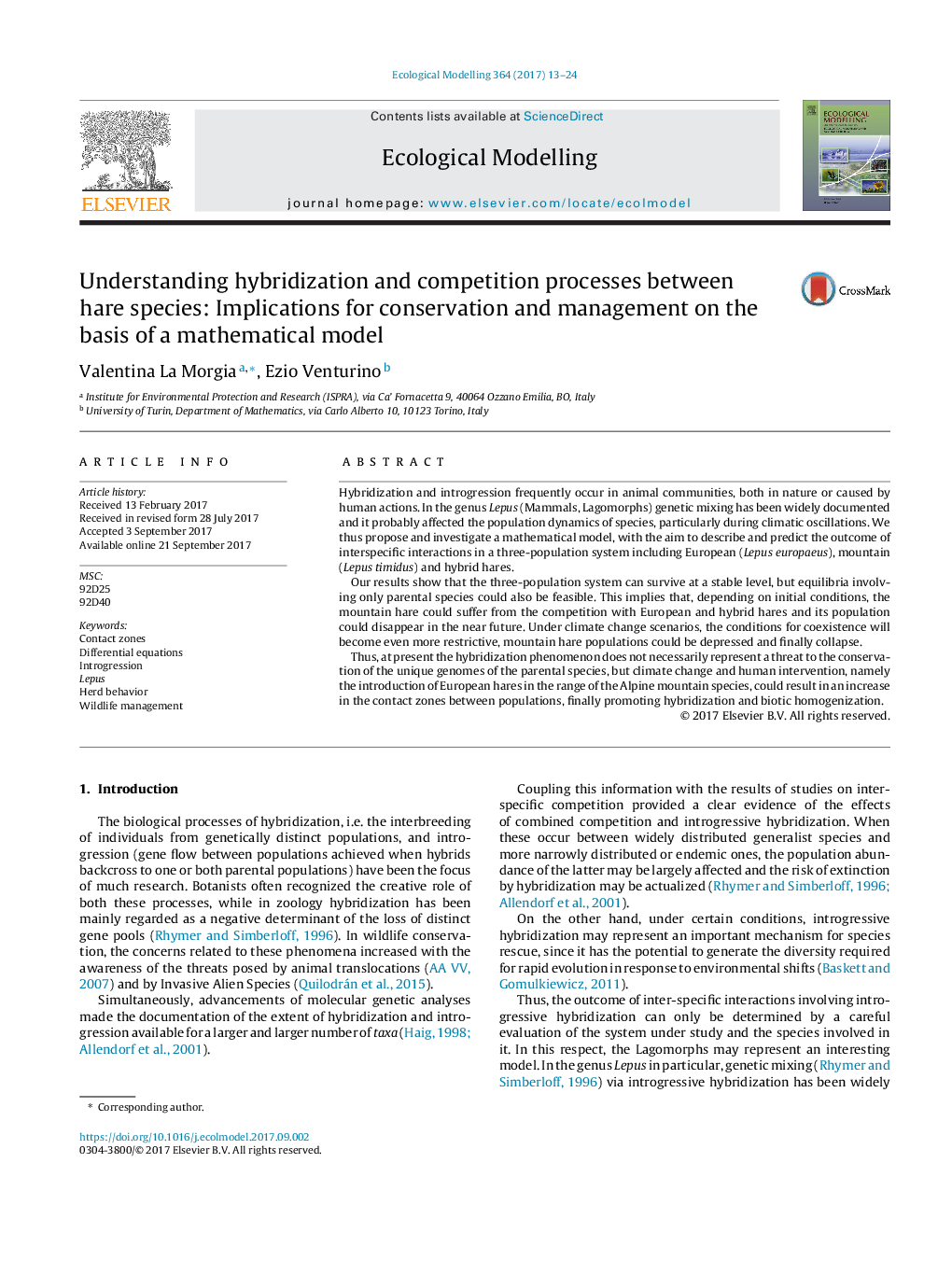| Article ID | Journal | Published Year | Pages | File Type |
|---|---|---|---|---|
| 5741978 | Ecological Modelling | 2017 | 12 Pages |
â¢Hybridization shapes Lagomorphs communities worldwide and may threat endemic hares.â¢A model clarifies the outcome of contact-zone interactions among hares.â¢Coexistence among hares and hybrids occurs at a stable level.â¢Climate change and human intervention could depress mountain hare populations.
Hybridization and introgression frequently occur in animal communities, both in nature or caused by human actions. In the genus Lepus (Mammals, Lagomorphs) genetic mixing has been widely documented and it probably affected the population dynamics of species, particularly during climatic oscillations. We thus propose and investigate a mathematical model, with the aim to describe and predict the outcome of interspecific interactions in a three-population system including European (Lepus europaeus), mountain (Lepus timidus) and hybrid hares.Our results show that the three-population system can survive at a stable level, but equilibria involving only parental species could also be feasible. This implies that, depending on initial conditions, the mountain hare could suffer from the competition with European and hybrid hares and its population could disappear in the near future. Under climate change scenarios, the conditions for coexistence will become even more restrictive, mountain hare populations could be depressed and finally collapse.Thus, at present the hybridization phenomenon does not necessarily represent a threat to the conservation of the unique genomes of the parental species, but climate change and human intervention, namely the introduction of European hares in the range of the Alpine mountain species, could result in an increase in the contact zones between populations, finally promoting hybridization and biotic homogenization.
Graphical abstractDownload high-res image (100KB)Download full-size image
